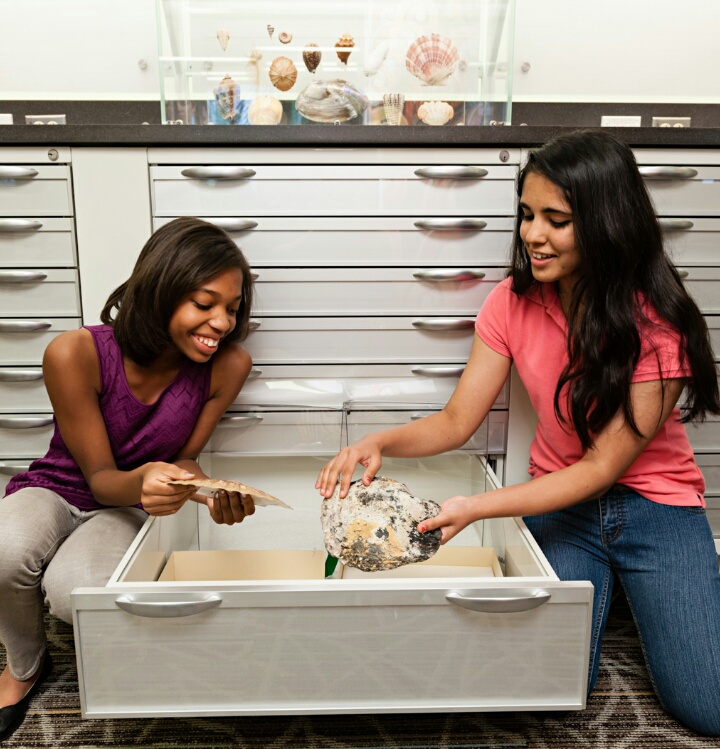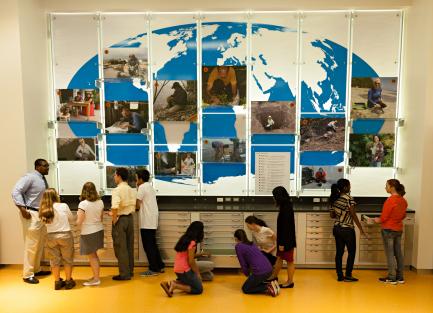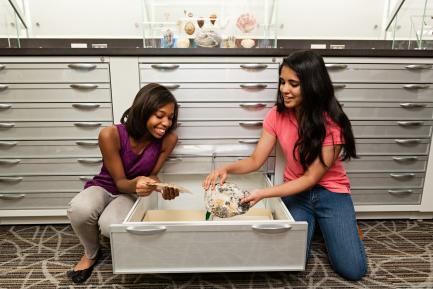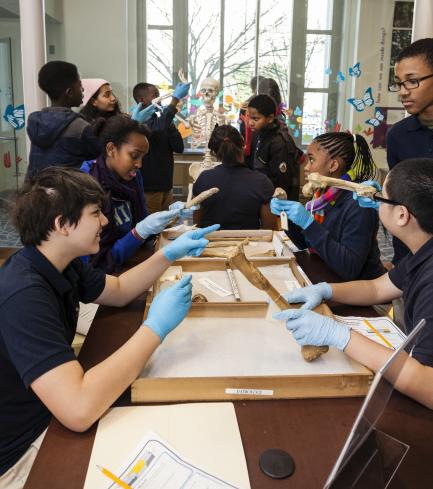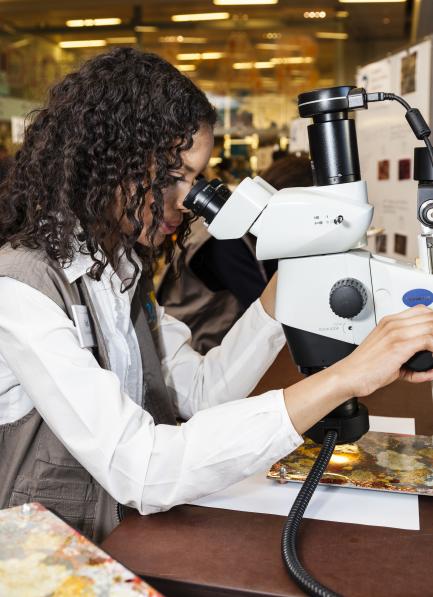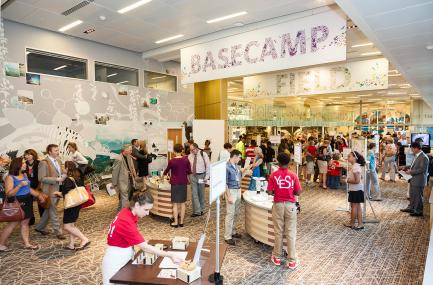Smithsonian Opens a New State-of-the-Art Learning Center for Teens
The Smithsonian’s National Museum of Natural History will open a first-of-its-kind interactive environment for teens Dec. 12. The space, called Q?rius (pronounced “curious”), is a new way to connect science with the everyday teen experience. The space combines the properties of scientific labs, collections vaults, creative studios and hangout spots to inspire teen visitors, their families and teachers to explore their world with curiosity and excitement. Through conversations with scientists and hands-on interactions with thousands of authentic museum specimens and objects, Q?rius visitors will experience how science is relevant to them and how they can develop the skills to become the scientists of tomorrow.
“We're taking the traditional museum and turning it inside out to help teens make sense of the world they are inheriting and giving them access to all our expertise−they can rub shoulders with our scientists, handle really cool objects and use amazing microscopes,” said Kirk Johnson, Sant Director of the National Museum of Natural History. “Q?rius is a place where young people and science experts can come together to try to figure out how we will meet the challenges of the future.”
In Q?rius, learning is experiential and can be customized to meet each person’s particular interests. When visitors enter the newly renovated 10,000-square-foot environment, they will encounter seven distinct spaces designed for a wide variety of activities. A 100-seat theater will host scientific demonstrations, presentations, films and live Internet feeds from field research sites all over the world.
An important feature is the immense collection of more than 6,000 museum objects that will be available to visitors to explore and investigate. Q?rius will give teens unparalleled access to bones, minerals and fossils more than 485 million years old from the largest teaching collection in the world. They will have the opportunity to examine the collections using the same types of scientific instruments that Smithsonian researchers use in their work every day.
“Q?rius provides opportunities for educators to engage their students with science in relevant and lasting ways at the museum, online and through distance learning experiences,” said Shari Werb, assistant director for education and outreach at the National Museum of Natural History. “By interacting with Smithsonian scientists and other STEM professionals, teens can explore exciting 21st-century careers. Q?rius experiences will spark new ideas, invite unexpected connections and leave teens with a lasting personal connection to science.”
Among the key features of the new space are the group-oriented programs offered through “Natural History Investigations”: 60-minute workshops that offer in-depth explorations of a single area of natural science relevant to school curricula. Each investigation is available by reservation weekday mornings for school groups of up to 30 students in grades 5-12. During these staff-instructed inquiries, students use a combination of museum objects, data, equipment and digital assets to solve intriguing scientific challenges.
The Q?rius experience extends beyond the walls of the museum to the virtual world so visitors can continue their exploration online after they leave the museum. By scanning unique QR codes as they traverse Q?rius, visitors will earn badges by saving their activities, notes and drawings in a digital “Field Book.” Inspired by the field notebooks that Smithsonian scientists use to record data at research sites, this digital tool allows visitors to track their observations, draw their own scientific conclusions and continue learning on the Web.
Q?rius was made possible in part by the support of private donors, including the Margaret A. Cargill Foundation, Elizabeth and Whitney MacMillan, Barbara and Craig Barrett, the National Museum of Natural History Advisory Board 2012 and Olympus Corp.
Q?rius is located on the ground floor of the museum at the north entrance on Constitution Avenue N.W. Starting Dec. 12, Q?rius will be available to the public from 2 p.m. until closing on weekdays and all day on weekends. From 10 a.m. to 2 p.m. on weekdays, the space will be open exclusively to groups of 15 or more with reservations. Group registration is available here.
Information about volunteer opportunities is available here.
# # #
SI-467-2013
Ryan Lavery
202-633-0826

